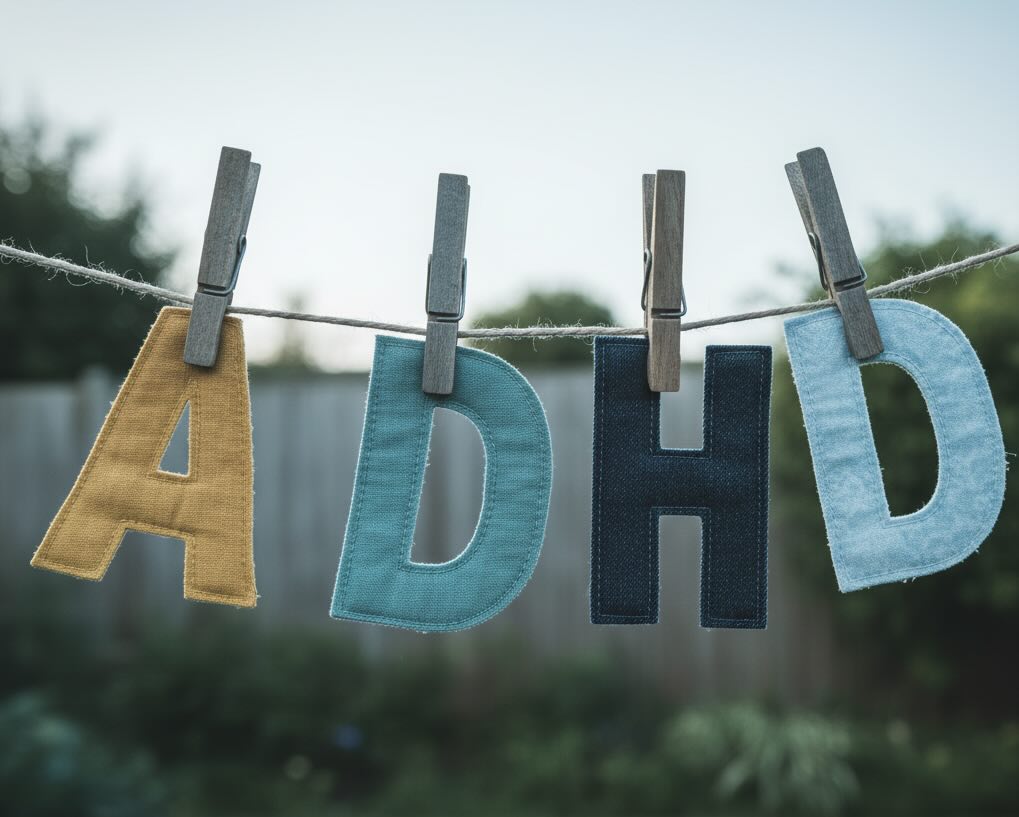What is Bipolar Disorder?
Bipolar and related disorders are defined by episodes of unusually elevated or irritable mood and increased energy (mania or hypomania) and usually also episodes of depression.
Key types of bipolar include:
- Bipolar I disorder: at least one full manic episode (often with major depression as well). Mania typically lasts at least a week or requires urgent hospital care and causes major change in functioning, sometimes with psychosis (loss of touch with reality).
- Bipolar II disorder: at least one hypomanic episode (similar to mania but less severe, no hospitalisation or frank psychosis) and one or more major depressive episodes. People with bipolar II often spend much more time depressed than “high”.
- Cyclothymic disorder: for 2+ years (1+ year in youth), many periods of hypomanic symptoms and periods of depressive symptoms that don’t fully meet criteria for hypomania or major depression, but still affect life.
Episodes can also have:
- Mixed features – symptoms of mania and depression at the same time (e.g. agitated, racing thoughts and suicidal despair together).
- Rapid cycling – 4 or more mood episodes in a year.
Bipolar disorder often occurs alongside anxiety disorders, ADHD, substance use, personality difficulties, and physical conditions such as cardiovascular disease and metabolic problems.
Bipolar Disorder Symptoms
Everyone’s pattern is different, but clinicians look for clusters of symptoms grouped into manic/hypomanic and depressive episodes.
Manic and hypomanic symptoms
Mania and hypomania share similar symptoms, but differ in severity, impact and duration. In both, your mood is distinctly different from your usual self.
Common features include:
- Feeling unusually high, “wired”, euphoric or irritable
- Needing much less sleep and still feeling energetic
- Talking more than usual, talking very fast, or feeling pressure to keep talking
- Racing thoughts or feeling like ideas are “on fast-forward”
- Being more distractible, finding it hard to stay on one topic or task
- Markedly increased activity, taking on lots of projects, being more social, travelling more, doing lots at once
- Risky or impulsive behaviour – overspending, speeding, gambling, risky sex, substance use, sudden big decisions (quitting jobs, moving, starting large projects).
In full mania, these changes are severe enough to cause big problems (work, relationships, finances), may involve psychotic symptoms (e.g. believing you have special powers or a special mission), or need hospital care to keep you safe. In hypomania, the changes are clear but less extreme; others usually notice, but you may feel “better than normal” and not see them as a problem at first.
Depressive symptoms
Depressive episodes in bipolar disorder look similar to major depression:
- Persistently low, empty or hopeless mood
- Loss of interest or pleasure in usual activities
- Changes in appetite or weight
- Sleep problems (insomnia or sleeping too much)
- Fatigue or low energy nearly every day
- Feeling guilty, worthless or like a burden
- Difficulty concentrating, making decisions or remembering
- Moving and thinking very slowly, or feeling agitated and unable to sit still
- Thoughts of death, self-harm or suicide.
Mixed episodes (e.g. intense agitation, racing thoughts with despair and suicidal ideas) can be particularly dangerous and exhausting.
Physical and cognitive symptoms
Bipolar disorder can affect the body and thinking as well as mood:
- Big swings in sleep patterns (insomnia in mania/hypomania or hypersomnia in depression)
- Changes in appetite, weight and energy
- Cognitive problems (“brain fog”, distractibility, slowed thinking) even between major episodes for some people
- Headaches, pain, and gastrointestinal upset, especially when stressed or unwell
- Side effects from medications (e.g. tremor, weight change, sedation, changes in kidney or thyroid function with some drugs like lithium).
How it may feel day-to-day
Many people describe:
- Not trusting their own moods – “never knowing who I’ll wake up as”
- Relief or even enjoyment in early hypomania (more energy, creativity, sociability) that later tips into chaos or risk
- Guilt, shame and regret after manic or mixed episodes (spending, arguments, risky behaviour)
- Long periods of depression with brief, intense “highs”, leading others to mislabel them as just “moody” or “difficult”
- Feeling misunderstood and frustrated when professionals only focus on depression and miss the manic/hypomanic side.
When to seek help
Seek urgent or emergency help immediately (emergency services or crisis team) if you or someone else has:
- Suicidal thoughts with intent or a plan, or has recently attempted suicide
- Manic symptoms with serious risk (reckless driving, dangerous spending, violence, high-risk behaviour)
- No or almost no sleep for several nights, plus racing thoughts, hallucinations or strong beliefs that others say aren’t real
- Confusion, disorientation, or sudden behaviour change that might suggest another medical emergency.
Seek prompt professional help from a mental health specialist if:
- You’ve had repeated episodes of depression and times when you were unusually high/energised, especially if others were worried
- You’ve been treated for depression, but antidepressants made you agitated, wired, or “too high”
- Mood episodes are affecting work, study, relationships or safety.
How Do You Assess for Bipolar Disorder?
Single disorder bipolar assessment tools like the Mood Disorder Questionnaire (MDQ), Hypomania Checklist-32 (HCL-32) and Bipolar Spectrum Diagnostic Scale (BSDS) and General Behaviour Inventory (GBI), cannot diagnose bipolar disorder on their own. Diagnosis relies on a careful clinical assessment by a suitably qualified professional (such as a psychiatrist, GP with mental health expertise, psychologist or specialist nurse in some countries).
Major Depressive Disorder (MDD) can be tricky because there are so many overlapping symptoms with other mental health conditions. There are single-condition assessment tools, but you risk being assessed with depression when you may have other mental health conditions. Formal diagnosis should involve a few steps:
- Start with a broad multi-condition mental health assessment: Multi-disorder tools like Loffty can:
- Highlight symptoms of depression, hypomania/mania and mixed states
- Screen for other conditions that commonly occur alongside bipolar disorder (e.g. anxiety, ADHD, substance use, trauma-related difficulties)
- Give you a structured summary to bring to your clinician, helping avoid missed diagnoses or mislabelling as “just depression” or “just anxiety”.
- A full clinical diagnosis by a mental health specialist usually covers:
- Detailed mood history: timing, duration and pattern of high, low and mixed moods over your life
- Impact on functioning: work/study, relationships, finances, risk-taking
- Family history: of bipolar disorder, depression, suicide or psychosis
- Medication and substance history: including responses to antidepressants and any stimulant or substance use
- Physical health: thyroid, metabolic and cardiovascular issues, sleep disorders, neurological conditions
- Ruling out other explanations, such as:
- Unipolar depression or recurrent depression
- Borderline personality disorder or complex trauma alone
- ADHD, anxiety disorders, substance-induced mood changes
- Medical conditions (e.g. thyroid disease, some neurological or endocrine disorders).
- Medical tests: there is no blood test that “proves” bipolar disorder, but tests are often used to:
- Check thyroid, kidney, liver and metabolic function
- Rule out other medical causes of mood symptoms
- Establish a baseline for medications like lithium, valproate or some antipsychotics
What to bring to an appointment
You might find it helpful to bring:
- A rough timeline of mood episodes, including any periods where you felt unusually energetic or needed less sleep
- Notes on family history of mood disorders or suicide
- A list of past medications and how you responded
- Feedback from a trusted person (partner, family member, close friend) who’s seen your mood changes over time.
How Do You Treat Bipolar Disorder?
Bipolar disorder is usually a long-term condition, but effective treatments exist. Most treatment plans involve:
- Managing acute episodes (mania, hypomania, depression, mixed states
- Preventing future episodes
- Reducing suicide risk and supporting quality of life
The best approach typically combines lifestyle changes, psychological therapy, medication and social support.
Important: Never start, stop or change psychiatric medication suddenly without medical advice, especially mood stabilisers like lithium or valproate and antipsychotic medicines. This can be dangerous and may trigger relapse.
Lifestyle and self-management foundations
These are not a substitute for treatment, but they matter a lot:
- Regular routines: especially sleep–wake times and meal times, to stabilise biological rhythms
- Monitoring mood and early warning signs: keeping a chart or using apps to track sleep, energy, mood and triggers
- Reducing alcohol and drugs: these can destabilise mood and interact with medications
- Stress management: setting realistic limits, building in rest, and learning calming strategies
- Support network: involving trusted family, friends or peer support where safe and acceptable.
Psychological therapies
There is strong evidence that structured psychological therapies improve outcomes and reduce relapse when added to good medication management. Common approaches include:
- Psychoeducation (often in groups)
- Learning about bipolar disorder, triggers, early warning signs, sleep and routine, and treatment options. Demonstrated to reduce relapse rates and improve treatment adherence.
- Cognitive Behavioural Therapy (CBT) for bipolar disorder
- Helps identify links between thoughts, feelings, behaviour and mood episodes; builds coping strategies and relapse-prevention plans.
- Interpersonal and Social Rhythm Therapy (IPSRT)
- Focuses on stabilising daily routines and addressing interpersonal stresses that can trigger mood episodes.
- Family-focused therapy (FFT)
- Involves family or close supporters in understanding bipolar disorder, improving communication and reducing conflict. Shows benefits in reducing relapse and hospitalisation.
- Peer support / lived-experience groups
- Many people find it powerful to connect with others who live with bipolar disorder through charities or peer-led groups.
Medication
Medication is usually central, particularly for bipolar I and bipolar II with significant episodes. Guidance from NICE, CANMAT/ISBD and other major bodies continues to emphasise:
- Lithium: Considered the gold standard mood stabiliser with strong evidence for preventing both manic and depressive relapses and reducing suicide risk. It requires regular blood tests (kidney, thyroid, and lithium levels) and careful dosing.
- Other mood stabilisers:
- Valproate / divalproex, lamotrigine, and sometimes carbamazepine can help, depending on the type of bipolar disorder and episode pattern.
- Valproate carries a high risk of birth defects and developmental problems in pregnancy, and many guidelines advise avoiding it for people who could become pregnant.
- Valproate / divalproex, lamotrigine, and sometimes carbamazepine can help, depending on the type of bipolar disorder and episode pattern.
- Atypical antipsychotics: Medicines such as quetiapine, olanzapine, risperidone, lurasidone, cariprazine and others are widely used in acute mania and bipolar depression, and often as maintenance in combination with mood stabilisers.
- Antidepressant: Can sometimes be used with a mood stabiliser, but most guidelines caution against antidepressant monotherapy in bipolar disorder because of the risk of switching into mania or rapid cycling.
Medication plans are highly individual; they should be reviewed regularly with a prescriber who monitors benefits, side effects, physical health and pregnancy plans.
In severe or treatment-resistant episodes (especially severe depression with high suicide risk or psychotic mania), electroconvulsive therapy (ECT) may be considered as a specialist treatment.
Levels of care
Depending on severity and risk, care might include:
- GP and primary care with occasional specialist input
- Community mental health services or specialist bipolar clinics
- Crisis teams or home treatment teams during high-risk periods
- Inpatient care when safety, intensive monitoring or rapid medication changes are required.
Bipolar Disorder Research
Prevalence and burden
- Global modelling suggests bipolar disorder affects around 1–2% of people over their lifetime, with considerable variation by method and region.
- Bipolar disorder contributes substantially to years lived with disability (YLDs) worldwide and is associated with increased physical health problems and premature mortality.
Suicide and mortality
Bipolar disorder is associated with elevated suicide risk, though the majority of people with bipolar disorder do not die by suicide.
- Meta-analyses suggest around a third of people with bipolar disorder have made at least one suicide attempt.
- Suicide risk appears to be 10–30 times higher than in the general population, particularly around severe depressive or mixed episodes and in the years after hospital discharge.
- Large recent studies confirm substantially higher all-cause and cause-specific mortality in bipolar disorder, highlighting the importance of sustained treatment and physical health care.
Genetics and biology
- Recent very large genome-wide association studies have identified hundreds of genomic regions associated with bipolar disorder, confirming that it is highly polygenic and biologically complex.
- Research is exploring brain circuits, circadian rhythms, immune and metabolic factors, and gut–brain links in bipolar disorder.
Emerging treatments and approaches
- New work is examining optimised lithium use, long-acting injectables, and novel mood-stabilising and antidepressant strategies specific to bipolar disorder.
- Machine-learning and digital tools are being studied to better predict relapse and suicide risk, and to personalise treatment.
Books and Resources About Bipolar Disorder
- The Bipolar Disorder Survival Guide: What You and Your Family Need to Know. David J. Miklowitz. A practical, evidence-based guide for people with bipolar disorder and their families, covering mood episodes, treatment options and self-management strategies.
- Bipolar Disorder: A Family-Focused Treatment Approach. David J. Miklowitz. A more clinical but readable book explaining family-focused therapy (FFT) and how families can support recovery and reduce relapse.




